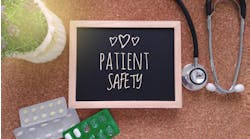The federal Agency for Health Research and Quality (AHRQ) intends to spend up to $5 million to fund eight patient safety learning laboratories in fiscal year 2019.
AHRQ encourages applications that address the opioid crisis or patient safety aspects of value-based care. The agency also recognizes the importance of addressing harms caused by diagnostic errors and failure.
AHRQ notes that while there has been some progress made on infection control, medication safety, health IT teamwork, and safety culture, they are not the norm. “Much of the progress has occurred at well-resourced and culturally receptive institutions. Further efforts are needed for improvements to be more widespread and better integrated into the fabric and structure of clinical work nationwide,” its Request for Application (RFA) says.
In 2014 and 2015 AHRQ funded 13 multiyear demonstration projects to evaluate applying a systems engineering approach to patient safety.
The agency envisions the learning laboratories will be places and networks where trans-disciplinary teams identify closely related threats to diagnostic or treatment efforts associated with a high burden of harm and cost. Following a systems engineering methodology, the learning laboratories will stretch professional boundaries, envision innovative designs, and take advantage of brainstorming and rapid prototyping techniques that other leading industries employ. Promising prototypes will undergo further develop-test-revise iterations, and subsequent integration as a working system. After further improvements are made to the integrated working system, its efficacy will be evaluated in a realistic simulated or clinical setting.
Applications are due by March 29 with funded projects starting approximately four months later. The total costs (direct and indirect) for a project awarded under this funding announcement will not exceed $625,000 in any given year and $2.5 million for the entire project period, which may not exceed four years.

